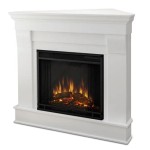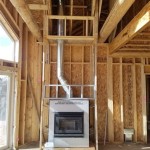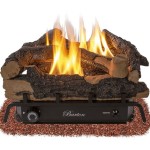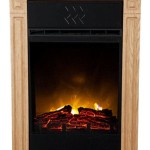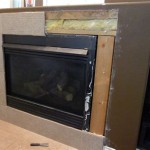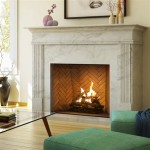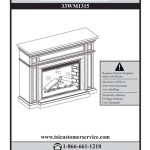Vented Gas Log Fireplace Installation: A Comprehensive Guide
Vented gas log fireplaces offer a convenient and aesthetically pleasing alternative to traditional wood-burning fireplaces. They provide the ambiance of a real fire without the hassle of wood storage, chopping, and ash disposal. However, proper installation is crucial for safety and optimal performance. This article outlines the key aspects of vented gas log fireplace installation, providing a comprehensive guide to ensure a successful and safe setup.
Before commencing any installation work, it is imperative to consult local building codes and regulations. These codes dictate specific requirements for gas fireplace installations, including venting specifications, gas line installation standards, and required clearances from combustible materials. Failure to adhere to these regulations can result in safety hazards, property damage, and potential legal repercussions. Obtaining the necessary permits is also a crucial step in the pre-installation phase.
Ensuring Compatibility and Preparing the Fireplace
The first step in installing a vented gas log fireplace is to verify that the existing fireplace is suitable for gas log installation. This involves several key considerations. The fireplace must be a fully functional, code-compliant wood-burning fireplace with a working chimney. The damper must be permanently propped open to ensure adequate ventilation. Vented gas logs produce carbon monoxide, and a properly functioning chimney is essential for safely exhausting these gases to the outside.
Furthermore, the dimensions of the fireplace firebox must be compatible with the size of the gas log set. Gas logs come in various sizes, and selecting the appropriate size is critical for both aesthetic appeal and efficient combustion. Consult the manufacturer's specifications for the gas log set to determine the minimum firebox dimensions required. The gas log set should fit comfortably within the firebox without obstructing the pilot light or burner.
Before installing the gas logs, the fireplace should be thoroughly cleaned. Remove any ash, soot, or debris from the firebox and chimney. Inspect the chimney for any cracks or damage. If any issues are identified, they must be addressed before proceeding with the installation. A professional chimney sweep can inspect and clean the chimney, ensuring that it is in good working order and free from obstructions.
The existing damper must be permanently fixed in the open position. This can be achieved in several ways, such as removing the damper door or securing it open with a clamp or brace. The purpose of this modification is to ensure that the chimney is always open to allow for proper ventilation of combustion gases. Failure to do so can result in a buildup of carbon monoxide inside the home.
Installing the Gas Line and Burner Assembly
The installation of the gas line is a critical aspect of the vented gas log fireplace installation process and should only be performed by a qualified and licensed gas fitter. Incorrect installation of the gas line can lead to dangerous gas leaks, creating a significant fire hazard. The gas fitter will ensure that the gas line is properly sized, installed, and tested for leaks.
The gas line should be connected to the existing gas supply using appropriate fittings and connectors. A shut-off valve should be installed in the gas line near the fireplace to allow for easy shut-off in case of emergency or maintenance. The gas fitter will use a pressure gauge to test the gas line for leaks and ensure that it meets all applicable codes and regulations.
Once the gas line is installed and tested, the burner assembly can be installed in the firebox. The burner assembly typically consists of a burner tube, a pilot light assembly, and a control valve. The burner assembly should be installed according to the manufacturer's instructions. Ensure that the burner tube is properly aligned and securely connected to the gas line.
The pilot light assembly should be positioned so that the pilot flame ignites the main burner. Some gas log sets include a remote control or thermostat for controlling the flame height and temperature. If the gas log set includes these features, they should be installed and connected according to the manufacturer's instructions.
Arranging the Gas Logs and Testing the System
The final step in the installation process is to arrange the gas logs on the burner assembly. The logs should be arranged in a manner that resembles a natural wood-burning fire while allowing for proper airflow around the burner. The manufacturer's instructions will provide specific guidelines for arranging the logs to achieve the desired aesthetic effect and ensure efficient combustion.
It is crucial to ensure that the logs do not obstruct the pilot light or burner. The logs should be positioned so that the flames can reach them easily, allowing for a realistic and appealing flame pattern. Avoid overcrowding the firebox with logs, as this can restrict airflow and reduce the efficiency of the fireplace.
Once the logs are arranged, the gas log fireplace should be tested to ensure that it is functioning properly. Turn on the gas supply and ignite the pilot light. Allow the pilot light to warm up for a few minutes before turning on the main burner. Observe the flame pattern and ensure that the logs are burning evenly and efficiently.
Check for any gas leaks using a soap and water solution. Apply the solution to all gas connections and look for bubbles. If any leaks are detected, immediately shut off the gas supply and contact a qualified gas fitter for repairs. Monitor the fireplace for any unusual noises or smells during operation. If any issues are detected, shut off the gas supply and consult a qualified technician.
After the installation, it is important to have the gas log fireplace inspected by a qualified professional. This inspection will ensure that the fireplace is installed correctly and that it meets all applicable codes and regulations. Regular maintenance, including cleaning the burner assembly and inspecting the chimney, is also essential for ensuring the long-term safety and performance of the gas log fireplace.

How To Select And Install A Gas Fireplace Log Set Fireplaces Direct Learning Center

Vented Gas Logs Heater Or Decorative Bart Fireside

Vented Vs B Vent Direct Free Dixie S

Vented Gas Logs Freeman

Napoleon Gl18e Vented Gas Log Set 18 Inch

The Many Benefits Of Installing A Gas Log Set In Your Fireplace

White Mountain Hearth Vented Gas Log Set Review Fireplaces Direct Learning Center

Napoleon Reversible Vented Gas Log Set Logs Stove Hearth Patio

Can A Wood Burning Fireplace Be Converted To Gas The Flame Company

Convert To Gas Installing Fireplace Inserts Doctor Flue
Related Posts

